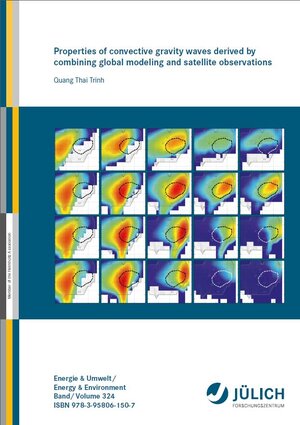
×
![Buchcover ISBN 9783958061507]()
Properties of convective gravity waves derived by combining global modeling and satellite observations
von Quang Thai TrinhGravity waves play the key role in the dynamics of the middle atmosphere.
Among different gravity wave sources, convection has been long accepted as one
of the most prominent ones. However, due to the broad spectrum of convective
gravity waves and limitations of current observation techniques, the contribution
of these waves to atmospheric dynamics is still an open issue. Moreover, due
to the same reasons, the horizontal and temporal scales of gravity waves forced
by convection are not well known. These scales are usually treated in current
convective gravity wave parameterizations as free parameters and they are defined
by assuming typical scales of convective systems. In this study, we addressed
these issues using a unique approach of combining modeling and measurements.
In order to determine the scales of convective gravity waves, instead of assuming
typical scales of convective systems, a systematic survey varying the spatial and
temporal scales as free parameters of the Yonsei convective gravity wave source
(CGWS) scheme is performed. Gravity waves are generated using this CGWS
scheme and propagated upward using the Gravity wave Regional Or Global RAy
Tracer (GROGRAT). Gravity wave momentum flux spectra in terms of horizontal
and vertical wave numbers are calculated from simulations and compared with
the respective spectrum observed by the High Resolution Dynamics Limb Sounder
(HIRDLS). Based on this comparison, combinations of scale sets which reproduce
the observed gravity wave spectrum are selected.
HIRDLS can only see a limited portion of the gravity wave spectrum due to
visibility effects and observation geometry. To allow for a meaningful comparison
of simulated gravity waves to observations a comprehensive filter that mimics the
instrument limitations is applied to the simulated waves. This comprehensive
observational filter takes into account both instrument visibility due to radiative
transfer and retrieval as well as the complex observation geometry.[...]
Among different gravity wave sources, convection has been long accepted as one
of the most prominent ones. However, due to the broad spectrum of convective
gravity waves and limitations of current observation techniques, the contribution
of these waves to atmospheric dynamics is still an open issue. Moreover, due
to the same reasons, the horizontal and temporal scales of gravity waves forced
by convection are not well known. These scales are usually treated in current
convective gravity wave parameterizations as free parameters and they are defined
by assuming typical scales of convective systems. In this study, we addressed
these issues using a unique approach of combining modeling and measurements.
In order to determine the scales of convective gravity waves, instead of assuming
typical scales of convective systems, a systematic survey varying the spatial and
temporal scales as free parameters of the Yonsei convective gravity wave source
(CGWS) scheme is performed. Gravity waves are generated using this CGWS
scheme and propagated upward using the Gravity wave Regional Or Global RAy
Tracer (GROGRAT). Gravity wave momentum flux spectra in terms of horizontal
and vertical wave numbers are calculated from simulations and compared with
the respective spectrum observed by the High Resolution Dynamics Limb Sounder
(HIRDLS). Based on this comparison, combinations of scale sets which reproduce
the observed gravity wave spectrum are selected.
HIRDLS can only see a limited portion of the gravity wave spectrum due to
visibility effects and observation geometry. To allow for a meaningful comparison
of simulated gravity waves to observations a comprehensive filter that mimics the
instrument limitations is applied to the simulated waves. This comprehensive
observational filter takes into account both instrument visibility due to radiative
transfer and retrieval as well as the complex observation geometry.[...]


